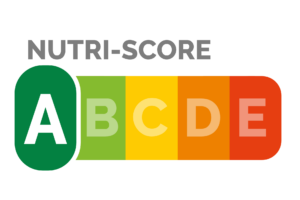Healthy believers: Stories that sell
Business development • Storytelling is an effective way to reach healthy believers – consumers with a strong belief about food’s importance to health – and motivate them to choose your product. But how do you tell a story? We have found out.
This is the second and final part in a series of articles on healthy believers – Consumers with strong convictions about what is the right healthy food. In the first article, we saw that this customer segment consists of self-realization, ethical, scientific and traditional consumers. Four sub-segments with diametrically different notions of what is healthy food and drink. In this article, we will explore how you can use storytelling to reach them and motivate them to choose your products.
Storytelling
In marketing, storytelling means that you – exactly! – tells a story. You borrow methods from the art of storytelling and apply it to marketing communication.
Storytelling is often used to tell the story of a brand and its legacy; what it stands for, and maybe what it doesn’t stand for.
But storytelling can also be used for other purposes. For example, to express the characteristics of a product, or to express the consumer’s experience of using the product.
Storytelling can also be used to engage potential buyers by highlighting an important topic.
The point of the stories is that they should get potential consumers to experience that the brand stands for the same things as yourself.
Crash course in storytelling
Three things are fundamental in storytelling: subject, conflict and plot.
A Subject is someone or something that engage the spectator. It is often the main character that drives the story forward. It can be a human, a dog, a flower, or just about anything, as long as it triggers the recipient’s empathy.
The term Conflict sounds more dramatic than it needs to be. It can be a challenge, a problem, a barrier or something that prevents the subject from reaching the ‘next level’.
The Plot is a result of events that the subject experiences in his quest to resolve the conflict. It is the very act of the story. Roughly, it always follows the same pattern. The story begins with the subject being introduced together with other things necessary to understand the story. Then the conflict is introduced, which gradually increases until a climax, after which things start to settle. When the conflict is resolved, the subject reaches the ‘next level’ and the story ends.
Storytelling is a powerful method. That has been shown by research in psychology and is supported by research in neurobiology.
Examples of storytelling
Uber Eats offers a touching example of storytelling. In a short film of cinematic quality, they tell the story of a food delivery boy on a scooter being late an evening when the rain is pouring all over him. When he finally reaches his destination he rings on the door to deliver the food. You can’t guess what happens then…
Another example worth mentioning is the Scarecrow from 2013, by the American fast-food chain Chipotle. It is about a scarecrow who leaves his farm to start working in a dystopian food factory. Outraged by what he sees in the factory, he returns home to the farm, inspired to sell burritos with a sign with the prompt ‘Grow a better world’.
The Scarecrow is almost a masterpiece. But sometimes it’s not enough. The brand must also live up to its promises. Chipotle has experienced this the hard way; they have struggled after several outbreaks of E. coli bacteria and salmonella due to poor food management.
Snippets
Uber Eats and Chipotle’s films are very ambitious. But storytelling can also be quite simple.
Take advantage of all the mini-stories that you and your colleagues share with each other in the coffee room, at the lunch break, over a beer during after work or at the corporate party.
Communication consultant Per Torberger calls these fragments snippets in an episode of Kntnt radio. He encourages listeners of the podcast episode to gather snippets and then use them to create stories.
The snippet can be details, statements, events, meetings – yes, really anything. Think about all the things that are constantly happening in your business. Colleagues talk to each other, salespeople go to customer meetings, product developers get inspired at a conference, ideas are born and some become reality while others never leave the drawing board.
Let’s look at an example.
Reality television
In the middle of nowhere, in the southern Swedish countryside, there is a village with a few hundred inhabitants. The only attraction is the church in the middle of the village. Established in 1829 on the wall of a church from the 13th century.
But the village is not famous for its church.
Next door to the church is a discount department store that attracts up to 30,000 visitors each day. With such an influx of people, whose only goal is to buy a lot and cheap, amusing situations quickly arise – perfect snippets for storytelling. The popular department store has found a marketing opportunity of a lifetime, and together with a Swedish TV channel, they make a reality series with the same name as the small municipality: Ullared.

For more than ten years, the reality series has rolled on Swedish television. In the TV series, we get an insight into everything that goes on – in and around the department store. The employees’ tasks, private lives and everyday challenges, the camping visitors and their shopping, the CEO Boris who stands on top of the roof every morning looking out over the everlasting queue minutes before opening, and much more.
It is a myriad of snippets that together narrate the overall story of the popular discount department store that almost all Swedes and many from neighbouring countries have a relationship with.
Storytelling for healthy believers
Storytelling is an effective way to reach consumers and create an understanding of what a brand stands for. It can determine consumers’ choices. This is especially true when consumers are driven by a strong conviction. They choose brands that are consistent with their perception. Therefore, storytelling is especially good for food companies who want to motivate healthy believers to choose their particular products.
But it is not possible to appeal to all healthy believers with the same stories. There are far too large differences between the different sub-segments.
To successfully market a brand with the help of storytelling to healthy believers, the stories need to match their conviction. It must not sound false. Let’s look at what it really means.

Storytelling for self-realization consumers
Storytelling for self-realization consumers builds on the subjective experience. Therefore, it is close at hand to tell a story that starts from a certain person`s point of view, and his or her experiences and worldview. The tonality should encourage enjoyment. In order to create confidence in this segment, one must, therefore, communicate a holistic message of well-being and health. It is as much body as soul. Therefore, do not forget the spiritual dimension of the story.
Stories for self-realization consumers
- Confirm that self-realization can contribute to higher purposes
- Affirm the productive aspects of the good of life
- Don’t question what the consumer holds true; treat it as fact
- Don’t ignore people’s stories about themselves
Storytelling for ethical consumers
Brands that appeal to ethical consumers understand that personal choice has a political dimension. To appeal to ethical consumers, one should take a stand – as long as one takes the ‘right’ position – if one wants to get close to this group. Companies doing so know that they will not appeal to everyone, but the profit can be a loyal customer base that will happily defend the brand’s statements and opinions.
This opens up several possible storytelling options. If you have a lot of snippets in the organization that showcases sustainability, ethics and responsibility, you can rightfully choose to tell a story from the company’s perspective.
But it is also conceivable to choose the other option; telling the story about a subject facing a problem to be solved, or a challenge. For example, related to issues such as environment, injustice, animal care, or another relevant issue that engages.
Storytelling for the ethical consumer is largely about being here and now. What are the red hot issues right now? Where do we stand? Are we able to take action? These are questions that should be asked all the time.
Stories for ethical consumers
- Be transparent
- Take a stand
- Don’t ignore the future of the world
- Don’t hide the political aspect of food
Storytelling for scientific consumers
Brands that appeal to the scientific consumer must have good anchorage academics and research. The tonality should feel sharp and cutting edge. If the product is an advanced sports drink for long-distance running, the brand should make the consumer feel sophisticated and professional.
It is important to constantly remind the consumer about the product’s properties and attributes in a clear and concrete way. If you drink this you will be the best, fastest, most durable, maintain a consistent energy level, and so on.
In order to appeal to this segment with the help of storytelling, it is in order to be concrete and evident. One way is to use snippets that highlight proficient people and experts. Then build a story based on their knowledge, opinions and experience.
Stories for scientific consumers
- Introduce experts whom consumers have confidence in
- Emphasize the importance of achievement
- Don’t over-simplify; consumers do their own investigations
- Don’t underestimate the ritual aspects of discipline
Storytelling for Traditional Consumers
Brands that appeal to the traditional consumer are not afraid to open the gates and showcase the work environment, production processes and animal management. It’s actually a must.
The traditional consumer is not interested in hearing about products with ‘new formula’, ‘new flavours’ or similar. Simplicity is the keyword.
They are also sensitive to messages and stories that do not feel sincere. It must be authentic. Tell a story and tell it flat out, but stick to the truth. Remember to emphasize the local, family and heritage that you now are in hold of. The traditional consumer is not particularly willing to buy global and large-scale products, but is willing to compromise if food and drink originate from a particular country or region; olive oil may be from Italy and mustard from France. Again – tradition and authenticity.
To appeal to this segment with the help of storytelling it is close at hand to make full use of snippets. If the company or product has a genuine and exciting history, it can be utilized to the full by gathering stories and anecdotes from the company’s history.
The risk, however, is that it can be perceived as unimaginative and predictable. It is a relatively common way of storytelling in order to express tradition, security and authenticity. It is therefore perhaps more exciting to tell a story about a subject that is facing a challenge.
Stories of traditional consumers
- Anchor innovations in traditions
- Tell stories that are easy to connect with
- Don’t hide your everyday activities; Instead, show it to the audience.
- Don’t ignore cultural and historical context.
Read more
In two articles, we have explored four types of healthy believers and looked at how food companies can use storytelling for marketing purposes and attracting new customers. The main source of the articles is the Global Gamechangers 2020 report from the Healthy Marketing Team.
If you want to know more about storytelling, healthy believers, generation Z (which we have written about in another article) and other things food producers should keep track of 2020, you should order your copy of the report.
Please, share this article if you liked it.
[et_social_share]




